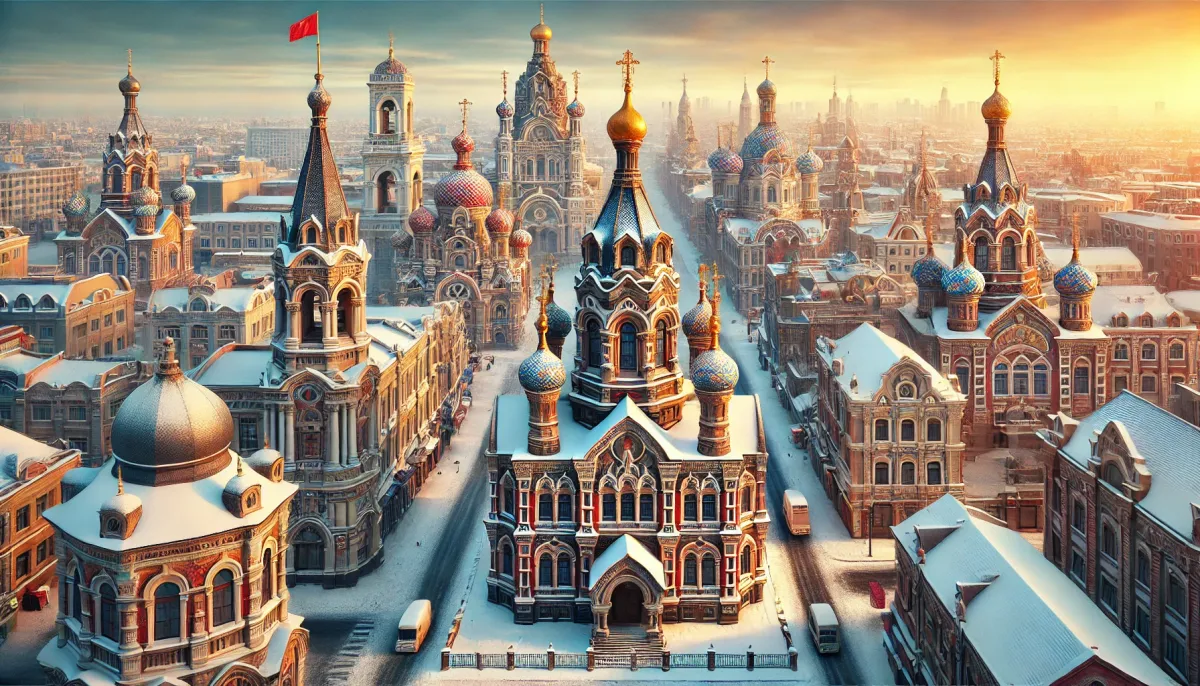Hey everyone, Mark here! I'm a seasoned backpacker with a passion for exploring Asia's hidden gems. Recently, I had the incredible opportunity to explore Harbin, a city in Northeast China that completely blew me away. Forget everything you think you know about China; Harbin is a unique blend of East and West, offering a captivating experience unlike any other. This isn't your typical Asian city break; this is a journey into a fascinating historical melting pot.
A Walk Through a Russian Fairytale: Exploring Harbin's Architectural Wonders
Walking the streets of Harbin felt like stepping into a different world. The city's architecture is stunning; onion-domed Orthodox churches and ornate buildings stand as testaments to its rich history. I was completely mesmerized! Imagine strolling down streets lined with these breathtaking structures, a sight you'd expect to find in Eastern Europe, not in China. It's a captivating visual experience unlike any other Asian city I've explored. Many historical buildings in other parts of China have been lost to fire or revolution. However, Harbin’s unique architectural heritage has largely survived. I explored the recently opened Volga Manor, a meticulously recreated 1:1 replica of these historical structures. It's a truly immersive experience.
The Volga Manor: A Perfect Replica of History
The Volga Manor is a must-see. This theme park accurately replicates the historical buildings of Harbin, creating an atmosphere that's undeniably Russian. Frankly, if you weren't told you were in China, you’d never guess it. The attention to detail is remarkable; it's a testament to the city's unique history and heritage.
Harbin's Unique Religious Landscape: A Meeting of Faiths
Harbin's history isn't just about its architecture; it's about its people and their beliefs. As a hub of the Chinese Eastern Railway, Harbin became a melting pot of cultures and religions in the late 19th and early 20th centuries. By the 1940s, it housed not only Buddhist and Taoist temples, but also an astonishing 68 Western churches, including Orthodox, Catholic, Protestant, and even Jewish synagogues. This incredible diversity of faiths is extremely rare in China. I even learned about various denominations I'd never heard of before, like the Armenian Apostolic Church and different branches of Judaism. This fascinating mix of religious beliefs truly sets Harbin apart.
| Religion | Number of Places of Worship (Estimate) | Significance |
|---|---|---|
| Eastern Orthodox | Numerous | Dominant influence on architecture and culture; a testament to Russian immigration. |
| Catholic | Multiple | Significant presence, reflecting the cosmopolitan nature of Harbin. |
| Protestant | Multiple | Diverse denominations represented. |
| Judaism | Several | A reminder of the Jewish refuge sought in Harbin during times of persecution. |
| Buddhism | Numerous | Traditional Chinese religious presence. |
| Taoism | Numerous | Traditional Chinese religious presence. |
Harbin's Rise: A Story of Immigration and Cultural Exchange
Harbin's unique character is inextricably linked to the Chinese Eastern Railway and the influx of Russian immigrants. Prior to the October Revolution of 1917, the Russian population in Harbin even surpassed the Chinese population! This explains the city’s distinctly European feel. The railway facilitated a massive wave of immigration, transforming Harbin into a thriving multicultural hub. It's fascinating to learn how this influx of people, often escaping harsher climates, shaped the city's identity. After the October Revolution, Harbin became a refuge for White Russians, further solidifying its Russian character. The city’s cultural landscape was forever changed.
Orthodox Churches: A Unique Artistic Expression
Inside the Orthodox churches, I was struck by the absence of idols. Unlike Catholic churches, which often feature statues, Orthodox churches utilize iconography as their primary form of religious expression. These icons, painted on wood, reflected the cold, Northern style of the region, making them uniquely suited to Harbin's environment. This was a significant cultural difference that really stood out.
The Enduring Legacy of the Chinese Eastern Railway
The Chinese Eastern Railway is central to understanding Harbin's story. Forced upon China by Russia, this railway unexpectedly brought a wealth of cultural exchange, including a significant influx of Russian Orthodox Christians and their rich traditions. It’s truly remarkable how one infrastructure project could reshape a city’s cultural fabric for a century. The railway not only brought people and ideas but also contributed to Harbin's educational system, establishing the first foreign schools in the region. This early exposure to Western education set a precedent, demonstrating the railway's lasting impact. This unexpectedly changed the city's educational landscape and its development.
My Final Thoughts: A Must-See Destination for Any Traveler
Harbin exceeded all my expectations. It's a city that seamlessly blends East and West, creating a unique and unforgettable experience. The architecture, the religious diversity, and the compelling historical narrative make Harbin a must-see destination for any traveler. It’s a reminder of how unexpected connections and historical events can shape the present in extraordinary ways. This trip to Harbin has solidified it as one of my favorite cities in all of China.







